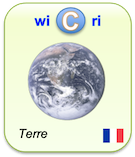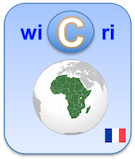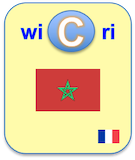Differentiation of environments of dolomite formation, Lower Cretaceous of Central Tunisia
Identifieur interne : 001420 ( Istex/Corpus ); précédent : 001419; suivant : 001421Differentiation of environments of dolomite formation, Lower Cretaceous of Central Tunisia
Auteurs : Ali M'RabetSource :
- Sedimentology [ 0037-0746 ] ; 1981-06.
Abstract
Combined field, sedimentological, mineralogical, isotopic and geochemical study of the Lower Cretaceous dolomites of Central Tunisia has demonstrated considerable diversity in origin. Environments of dolomite formation include deep phreatic, karst, lacustrine and evaporitic sabkha. All four groups of dolomite are composed of non‐stoichiometric and/or disordered crystals which are more or less rich in calcium and in iron. Petrographic fabrics are of three types: replacement, recrystallization and cementation. These three fabrics are proposed among the various criteria for the different environments of dolomitization. Average isotope (δ18 O and δ13 C) contents for these four dolomite groups range from −10·5 to +0·4%o (PDB) and −3·9 to + 3·7%o respectively. The distribution of strontium is related both to the degree of recrystallization and to the palaeosalinity. Ferrous iron, also very common, is regarded as an indicator of relatively deep reducing conditions, mainly in meteoric groundwaters. Sodium distribution is related to inclusions within the dolomite, its distribution being relatively constant in all four groups; it cannot be regarded as a reliable criterion for palaeosalinity of dolomitizing fluids. This study confirms that dolomitization may occur under widely different palaeoenvironments, either at the surface or during burial. With the exception of the sabkha environment, dolomitizing fluids seem to have been essentially meteoric.
Url:
DOI: 10.1111/j.1365-3091.1981.tb01684.x
Links to Exploration step
ISTEX:04B8902E529CA8B6E4F4E6643DE279B175859D75Le document en format XML
<record><TEI wicri:istexFullTextTei="biblStruct"><teiHeader><fileDesc><titleStmt><title xml:lang="en">Differentiation of environments of dolomite formation, Lower Cretaceous of Central Tunisia</title><author><name sortKey="M Rabet, Ali" sort="M Rabet, Ali" uniqKey="M Rabet A" first="Ali" last="M'Rabet">Ali M'Rabet</name><affiliation><mods:affiliation>Laboratoire de Pétrologie Sédimentaire et Paléontologie (ERA 765), Université Paris Sud, Centre d'Orsay, Bât. 504, 91405 Orsay Cedex, France</mods:affiliation></affiliation></author></titleStmt><publicationStmt><idno type="wicri:source">ISTEX</idno><idno type="RBID">ISTEX:04B8902E529CA8B6E4F4E6643DE279B175859D75</idno><date when="1981" year="1981">1981</date><idno type="doi">10.1111/j.1365-3091.1981.tb01684.x</idno><idno type="url">https://api.istex.fr/document/04B8902E529CA8B6E4F4E6643DE279B175859D75/fulltext/pdf</idno><idno type="wicri:Area/Istex/Corpus">001420</idno><idno type="wicri:explorRef" wicri:stream="Istex" wicri:step="Corpus" wicri:corpus="ISTEX">001420</idno></publicationStmt><sourceDesc><biblStruct><analytic><title level="a" type="main" xml:lang="en">Differentiation of environments of dolomite formation, Lower Cretaceous of Central Tunisia</title><author><name sortKey="M Rabet, Ali" sort="M Rabet, Ali" uniqKey="M Rabet A" first="Ali" last="M'Rabet">Ali M'Rabet</name><affiliation><mods:affiliation>Laboratoire de Pétrologie Sédimentaire et Paléontologie (ERA 765), Université Paris Sud, Centre d'Orsay, Bât. 504, 91405 Orsay Cedex, France</mods:affiliation></affiliation></author></analytic><monogr></monogr><series><title level="j">Sedimentology</title><idno type="ISSN">0037-0746</idno><idno type="eISSN">1365-3091</idno><imprint><publisher>Blackwell Publishing Ltd</publisher><pubPlace>Oxford, UK</pubPlace><date type="published" when="1981-06">1981-06</date><biblScope unit="volume">28</biblScope><biblScope unit="issue">3</biblScope><biblScope unit="page" from="331">331</biblScope><biblScope unit="page" to="352">352</biblScope></imprint><idno type="ISSN">0037-0746</idno></series><idno type="istex">04B8902E529CA8B6E4F4E6643DE279B175859D75</idno><idno type="DOI">10.1111/j.1365-3091.1981.tb01684.x</idno><idno type="ArticleID">SED331</idno></biblStruct></sourceDesc><seriesStmt><idno type="ISSN">0037-0746</idno></seriesStmt></fileDesc><profileDesc><textClass></textClass><langUsage><language ident="en">en</language></langUsage></profileDesc></teiHeader><front><div type="abstract" xml:lang="en">Combined field, sedimentological, mineralogical, isotopic and geochemical study of the Lower Cretaceous dolomites of Central Tunisia has demonstrated considerable diversity in origin. Environments of dolomite formation include deep phreatic, karst, lacustrine and evaporitic sabkha. All four groups of dolomite are composed of non‐stoichiometric and/or disordered crystals which are more or less rich in calcium and in iron. Petrographic fabrics are of three types: replacement, recrystallization and cementation. These three fabrics are proposed among the various criteria for the different environments of dolomitization. Average isotope (δ18 O and δ13 C) contents for these four dolomite groups range from −10·5 to +0·4%o (PDB) and −3·9 to + 3·7%o respectively. The distribution of strontium is related both to the degree of recrystallization and to the palaeosalinity. Ferrous iron, also very common, is regarded as an indicator of relatively deep reducing conditions, mainly in meteoric groundwaters. Sodium distribution is related to inclusions within the dolomite, its distribution being relatively constant in all four groups; it cannot be regarded as a reliable criterion for palaeosalinity of dolomitizing fluids. This study confirms that dolomitization may occur under widely different palaeoenvironments, either at the surface or during burial. With the exception of the sabkha environment, dolomitizing fluids seem to have been essentially meteoric.</div></front></TEI><istex><corpusName>wiley</corpusName><author><json:item><name>ALI M'RABET</name><affiliations><json:string>Laboratoire de Pétrologie Sédimentaire et Paléontologie (ERA 765), Université Paris Sud, Centre d'Orsay, Bât. 504, 91405 Orsay Cedex, France</json:string></affiliations></json:item></author><articleId><json:string>SED331</json:string></articleId><language><json:string>eng</json:string></language><originalGenre><json:string>article</json:string></originalGenre><abstract>Combined field, sedimentological, mineralogical, isotopic and geochemical study of the Lower Cretaceous dolomites of Central Tunisia has demonstrated considerable diversity in origin. Environments of dolomite formation include deep phreatic, karst, lacustrine and evaporitic sabkha. All four groups of dolomite are composed of non‐stoichiometric and/or disordered crystals which are more or less rich in calcium and in iron. Petrographic fabrics are of three types: replacement, recrystallization and cementation. These three fabrics are proposed among the various criteria for the different environments of dolomitization. Average isotope (δ18 O and δ13 C) contents for these four dolomite groups range from −10·5 to +0·4%o (PDB) and −3·9 to + 3·7%o respectively. The distribution of strontium is related both to the degree of recrystallization and to the palaeosalinity. Ferrous iron, also very common, is regarded as an indicator of relatively deep reducing conditions, mainly in meteoric groundwaters. Sodium distribution is related to inclusions within the dolomite, its distribution being relatively constant in all four groups; it cannot be regarded as a reliable criterion for palaeosalinity of dolomitizing fluids. This study confirms that dolomitization may occur under widely different palaeoenvironments, either at the surface or during burial. With the exception of the sabkha environment, dolomitizing fluids seem to have been essentially meteoric.</abstract><qualityIndicators><score>7.972</score><pdfVersion>1.4</pdfVersion><pdfPageSize>540 x 720 pts</pdfPageSize><refBibsNative>true</refBibsNative><keywordCount>0</keywordCount><abstractCharCount>1462</abstractCharCount><pdfWordCount>8478</pdfWordCount><pdfCharCount>57652</pdfCharCount><pdfPageCount>22</pdfPageCount><abstractWordCount>206</abstractWordCount></qualityIndicators><title>Differentiation of environments of dolomite formation, Lower Cretaceous of Central Tunisia</title><genre><json:string>article</json:string></genre><host><volume>28</volume><publisherId><json:string>SED</json:string></publisherId><pages><total>22</total><last>352</last><first>331</first></pages><issn><json:string>0037-0746</json:string></issn><issue>3</issue><genre><json:string>journal</json:string></genre><language><json:string>unknown</json:string></language><eissn><json:string>1365-3091</json:string></eissn><title>Sedimentology</title><doi><json:string>10.1111/(ISSN)1365-3091</json:string></doi></host><publicationDate>1981</publicationDate><copyrightDate>1981</copyrightDate><doi><json:string>10.1111/j.1365-3091.1981.tb01684.x</json:string></doi><id>04B8902E529CA8B6E4F4E6643DE279B175859D75</id><score>0.040758677</score><fulltext><json:item><original>true</original><mimetype>application/pdf</mimetype><extension>pdf</extension><uri>https://api.istex.fr/document/04B8902E529CA8B6E4F4E6643DE279B175859D75/fulltext/pdf</uri></json:item><json:item><original>false</original><mimetype>application/zip</mimetype><extension>zip</extension><uri>https://api.istex.fr/document/04B8902E529CA8B6E4F4E6643DE279B175859D75/fulltext/zip</uri></json:item><istex:fulltextTEI uri="https://api.istex.fr/document/04B8902E529CA8B6E4F4E6643DE279B175859D75/fulltext/tei"><teiHeader><fileDesc><titleStmt><title level="a" type="main" xml:lang="en">Differentiation of environments of dolomite formation, Lower Cretaceous of Central Tunisia</title></titleStmt><publicationStmt><authority>ISTEX</authority><publisher>Blackwell Publishing Ltd</publisher><pubPlace>Oxford, UK</pubPlace><availability><p>WILEY</p></availability><date>1981</date></publicationStmt><sourceDesc><biblStruct type="inbook"><analytic><title level="a" type="main" xml:lang="en">Differentiation of environments of dolomite formation, Lower Cretaceous of Central Tunisia</title><author xml:id="author-1"><persName><forename type="first">ALI</forename><surname>M'RABET</surname></persName><affiliation>Laboratoire de Pétrologie Sédimentaire et Paléontologie (ERA 765), Université Paris Sud, Centre d'Orsay, Bât. 504, 91405 Orsay Cedex, France</affiliation></author></analytic><monogr><title level="j">Sedimentology</title><idno type="pISSN">0037-0746</idno><idno type="eISSN">1365-3091</idno><idno type="DOI">10.1111/(ISSN)1365-3091</idno><imprint><publisher>Blackwell Publishing Ltd</publisher><pubPlace>Oxford, UK</pubPlace><date type="published" when="1981-06"></date><biblScope unit="volume">28</biblScope><biblScope unit="issue">3</biblScope><biblScope unit="page" from="331">331</biblScope><biblScope unit="page" to="352">352</biblScope></imprint></monogr><idno type="istex">04B8902E529CA8B6E4F4E6643DE279B175859D75</idno><idno type="DOI">10.1111/j.1365-3091.1981.tb01684.x</idno><idno type="ArticleID">SED331</idno></biblStruct></sourceDesc></fileDesc><profileDesc><creation><date>1981</date></creation><langUsage><language ident="en">en</language></langUsage><abstract xml:lang="en"><p>Combined field, sedimentological, mineralogical, isotopic and geochemical study of the Lower Cretaceous dolomites of Central Tunisia has demonstrated considerable diversity in origin. Environments of dolomite formation include deep phreatic, karst, lacustrine and evaporitic sabkha. All four groups of dolomite are composed of non‐stoichiometric and/or disordered crystals which are more or less rich in calcium and in iron. Petrographic fabrics are of three types: replacement, recrystallization and cementation. These three fabrics are proposed among the various criteria for the different environments of dolomitization. Average isotope (δ18 O and δ13 C) contents for these four dolomite groups range from −10·5 to +0·4%o (PDB) and −3·9 to + 3·7%o respectively. The distribution of strontium is related both to the degree of recrystallization and to the palaeosalinity. Ferrous iron, also very common, is regarded as an indicator of relatively deep reducing conditions, mainly in meteoric groundwaters. Sodium distribution is related to inclusions within the dolomite, its distribution being relatively constant in all four groups; it cannot be regarded as a reliable criterion for palaeosalinity of dolomitizing fluids. This study confirms that dolomitization may occur under widely different palaeoenvironments, either at the surface or during burial. With the exception of the sabkha environment, dolomitizing fluids seem to have been essentially meteoric.</p></abstract></profileDesc><revisionDesc><change when="1981-06">Published</change></revisionDesc></teiHeader></istex:fulltextTEI><json:item><original>false</original><mimetype>text/plain</mimetype><extension>txt</extension><uri>https://api.istex.fr/document/04B8902E529CA8B6E4F4E6643DE279B175859D75/fulltext/txt</uri></json:item></fulltext><metadata><istex:metadataXml wicri:clean="Wiley, elements deleted: body"><istex:xmlDeclaration>version="1.0" encoding="UTF-8" standalone="yes"</istex:xmlDeclaration><istex:document><component version="2.0" type="serialArticle" xml:lang="en"><header><publicationMeta level="product"><publisherInfo><publisherName>Blackwell Publishing Ltd</publisherName><publisherLoc>Oxford, UK</publisherLoc></publisherInfo><doi origin="wiley" registered="yes">10.1111/(ISSN)1365-3091</doi><issn type="print">0037-0746</issn><issn type="electronic">1365-3091</issn><idGroup><id type="product" value="SED"></id><id type="publisherDivision" value="ST"></id></idGroup><titleGroup><title type="main" sort="SEDIMENTOLOGY">Sedimentology</title></titleGroup></publicationMeta><publicationMeta level="part" position="06003"><doi origin="wiley">10.1111/sed.1981.28.issue-3</doi><numberingGroup><numbering type="journalVolume" number="28">28</numbering><numbering type="journalIssue" number="3">3</numbering></numberingGroup><coverDate startDate="1981-06">June 1981</coverDate></publicationMeta><publicationMeta level="unit" type="article" position="0033100" status="forIssue"><doi origin="wiley">10.1111/j.1365-3091.1981.tb01684.x</doi><idGroup><id type="unit" value="SED331"></id></idGroup><countGroup><count type="pageTotal" number="22"></count></countGroup><titleGroup><title type="tocHeading1">Article</title></titleGroup><eventGroup><event type="firstOnline" date="2006-06-14"></event><event type="publishedOnlineFinalForm" date="2006-06-14"></event><event type="xmlConverted" agent="Converter:BPG_TO_WML3G version:2.3.5 mode:FullText source:HeaderRef result:HeaderRef" date="2010-04-07"></event><event type="xmlConverted" agent="Converter:WILEY_ML3G_TO_WILEY_ML3GV2 version:4.0.1" date="2014-03-20"></event><event type="xmlConverted" agent="Converter:WML3G_To_WML3G version:4.1.7 mode:FullText,remove_FC" date="2014-11-03"></event></eventGroup><numberingGroup><numbering type="pageFirst" number="331">331</numbering><numbering type="pageLast" number="352">352</numbering></numberingGroup><linkGroup><link type="toTypesetVersion" href="file:SED.SED331.pdf"></link></linkGroup></publicationMeta><contentMeta><unparsedEditorialHistory>Manuscript received 17 December 1979; revision received 12 June 1980</unparsedEditorialHistory><countGroup><count type="referenceTotal" number="59"></count><count type="linksCrossRef" number="1"></count></countGroup><titleGroup><title type="main">Differentiation of environments of dolomite formation, Lower Cretaceous of Central Tunisia</title></titleGroup><creators><creator creatorRole="author" xml:id="cr1" affiliationRef="#a1"><personName><givenNames>ALI</givenNames><familyName>M'RABET</familyName></personName></creator></creators><affiliationGroup><affiliation xml:id="a1" countryCode="FR"><unparsedAffiliation>Laboratoire de Pétrologie Sédimentaire et Paléontologie (ERA 765), Université Paris Sud, Centre d'Orsay, Bât. 504, 91405 Orsay Cedex, France</unparsedAffiliation></affiliation></affiliationGroup><abstractGroup><abstract type="main" xml:lang="en"><title type="main">ABSTRACT</title><p>Combined field, sedimentological, mineralogical, isotopic and geochemical study of the Lower Cretaceous dolomites of Central Tunisia has demonstrated considerable diversity in origin. Environments of dolomite formation include deep phreatic, karst, lacustrine and evaporitic sabkha. All four groups of dolomite are composed of non‐stoichiometric and/or disordered crystals which are more or less rich in calcium and in iron. Petrographic fabrics are of three types: replacement, recrystallization and cementation. These three fabrics are proposed among the various criteria for the different environments of dolomitization. Average isotope (δ<sup>18</sup> O and δ<sup>13</sup> C) contents for these four dolomite groups range from −10·5 to +0·4%<sub>o</sub> (PDB) and −3·9 to + 3·7%<sub>o</sub> respectively. The distribution of strontium is related both to the degree of recrystallization and to the palaeosalinity. Ferrous iron, also very common, is regarded as an indicator of relatively deep reducing conditions, mainly in meteoric groundwaters. Sodium distribution is related to inclusions within the dolomite, its distribution being relatively constant in all four groups; it cannot be regarded as a reliable criterion for palaeosalinity of dolomitizing fluids. This study confirms that dolomitization may occur under widely different palaeoenvironments, either at the surface or during burial. With the exception of the sabkha environment, dolomitizing fluids seem to have been essentially meteoric.</p></abstract></abstractGroup></contentMeta></header></component></istex:document></istex:metadataXml><mods version="3.6"><titleInfo lang="en"><title>Differentiation of environments of dolomite formation, Lower Cretaceous of Central Tunisia</title></titleInfo><titleInfo type="alternative" contentType="CDATA" lang="en"><title>Differentiation of environments of dolomite formation, Lower Cretaceous of Central Tunisia</title></titleInfo><name type="personal"><namePart type="given">ALI</namePart><namePart type="family">M'RABET</namePart><affiliation>Laboratoire de Pétrologie Sédimentaire et Paléontologie (ERA 765), Université Paris Sud, Centre d'Orsay, Bât. 504, 91405 Orsay Cedex, France</affiliation><role><roleTerm type="text">author</roleTerm></role></name><typeOfResource>text</typeOfResource><genre type="article" displayLabel="article"></genre><originInfo><publisher>Blackwell Publishing Ltd</publisher><place><placeTerm type="text">Oxford, UK</placeTerm></place><dateIssued encoding="w3cdtf">1981-06</dateIssued><edition>Manuscript received 17 December 1979; revision received 12 June 1980</edition><copyrightDate encoding="w3cdtf">1981</copyrightDate></originInfo><language><languageTerm type="code" authority="rfc3066">en</languageTerm><languageTerm type="code" authority="iso639-2b">eng</languageTerm></language><physicalDescription><internetMediaType>text/html</internetMediaType><extent unit="references">59</extent></physicalDescription><abstract lang="en">Combined field, sedimentological, mineralogical, isotopic and geochemical study of the Lower Cretaceous dolomites of Central Tunisia has demonstrated considerable diversity in origin. Environments of dolomite formation include deep phreatic, karst, lacustrine and evaporitic sabkha. All four groups of dolomite are composed of non‐stoichiometric and/or disordered crystals which are more or less rich in calcium and in iron. Petrographic fabrics are of three types: replacement, recrystallization and cementation. These three fabrics are proposed among the various criteria for the different environments of dolomitization. Average isotope (δ18 O and δ13 C) contents for these four dolomite groups range from −10·5 to +0·4%o (PDB) and −3·9 to + 3·7%o respectively. The distribution of strontium is related both to the degree of recrystallization and to the palaeosalinity. Ferrous iron, also very common, is regarded as an indicator of relatively deep reducing conditions, mainly in meteoric groundwaters. Sodium distribution is related to inclusions within the dolomite, its distribution being relatively constant in all four groups; it cannot be regarded as a reliable criterion for palaeosalinity of dolomitizing fluids. This study confirms that dolomitization may occur under widely different palaeoenvironments, either at the surface or during burial. With the exception of the sabkha environment, dolomitizing fluids seem to have been essentially meteoric.</abstract><relatedItem type="host"><titleInfo><title>Sedimentology</title></titleInfo><genre type="journal">journal</genre><identifier type="ISSN">0037-0746</identifier><identifier type="eISSN">1365-3091</identifier><identifier type="DOI">10.1111/(ISSN)1365-3091</identifier><identifier type="PublisherID">SED</identifier><part><date>1981</date><detail type="volume"><caption>vol.</caption><number>28</number></detail><detail type="issue"><caption>no.</caption><number>3</number></detail><extent unit="pages"><start>331</start><end>352</end><total>22</total></extent></part></relatedItem><identifier type="istex">04B8902E529CA8B6E4F4E6643DE279B175859D75</identifier><identifier type="DOI">10.1111/j.1365-3091.1981.tb01684.x</identifier><identifier type="ArticleID">SED331</identifier><recordInfo><recordContentSource>WILEY</recordContentSource><recordOrigin>Blackwell Publishing Ltd</recordOrigin></recordInfo></mods></metadata><serie></serie></istex></record>Pour manipuler ce document sous Unix (Dilib)
EXPLOR_STEP=$WICRI_ROOT/Wicri/Terre/explor/CobaltMaghrebV1/Data/Istex/Corpus
HfdSelect -h $EXPLOR_STEP/biblio.hfd -nk 001420 | SxmlIndent | more
Ou
HfdSelect -h $EXPLOR_AREA/Data/Istex/Corpus/biblio.hfd -nk 001420 | SxmlIndent | more
Pour mettre un lien sur cette page dans le réseau Wicri
{{Explor lien
|wiki= Wicri/Terre
|area= CobaltMaghrebV1
|flux= Istex
|étape= Corpus
|type= RBID
|clé= ISTEX:04B8902E529CA8B6E4F4E6643DE279B175859D75
|texte= Differentiation of environments of dolomite formation, Lower Cretaceous of Central Tunisia
}}
|
| This area was generated with Dilib version V0.6.32. | |


